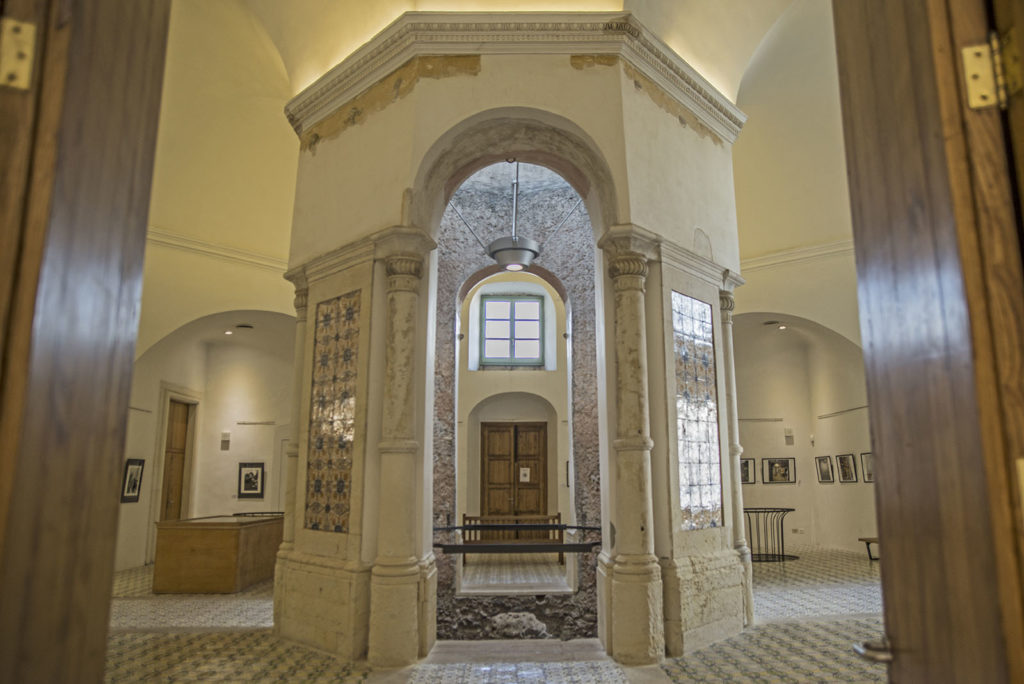One of the most evocative rooms of the monastery is the kitchen.
 Like the refectory, antirefectory, library and museum, the space dedicated to preparing food was designed by
Giovan Battista Vaccarini
Like the refectory, antirefectory, library and museum, the space dedicated to preparing food was designed by
Giovan Battista Vaccarini
and its construction began in 1739.
 The architect had to take into account the rules of monastic architecture, which meant separating the kitchen from the other rooms. This way, if there was a fire, it would not spread to the other rooms.
The architect had to take into account the rules of monastic architecture, which meant separating the kitchen from the other rooms. This way, if there was a fire, it would not spread to the other rooms.
Similarly, the passageways leading to the refectory as well as being narrow were equipped with multiple barriers.
The kitchen underwent various changes over the years, but the structure has remained the same with the hearths in the centre, a huge brazier placed in an octagonal “chamber”.
The
maiolica
decorations that enrich the structure create splendid orange and blue squares with a white background of abstract motifs. The floor is just as surprising. Also made with colourful maiolica tiles, it extends across the whole room. However, the floor is not simple or uniform; it is divided into eight parts with two different alternating decorations.
The first is a white floor with fine blue, black and yellow geometric decorations that cover the smaller portions; the other is larger and more colourful, where yellow and green dominate the blue, orange and white decoration. 